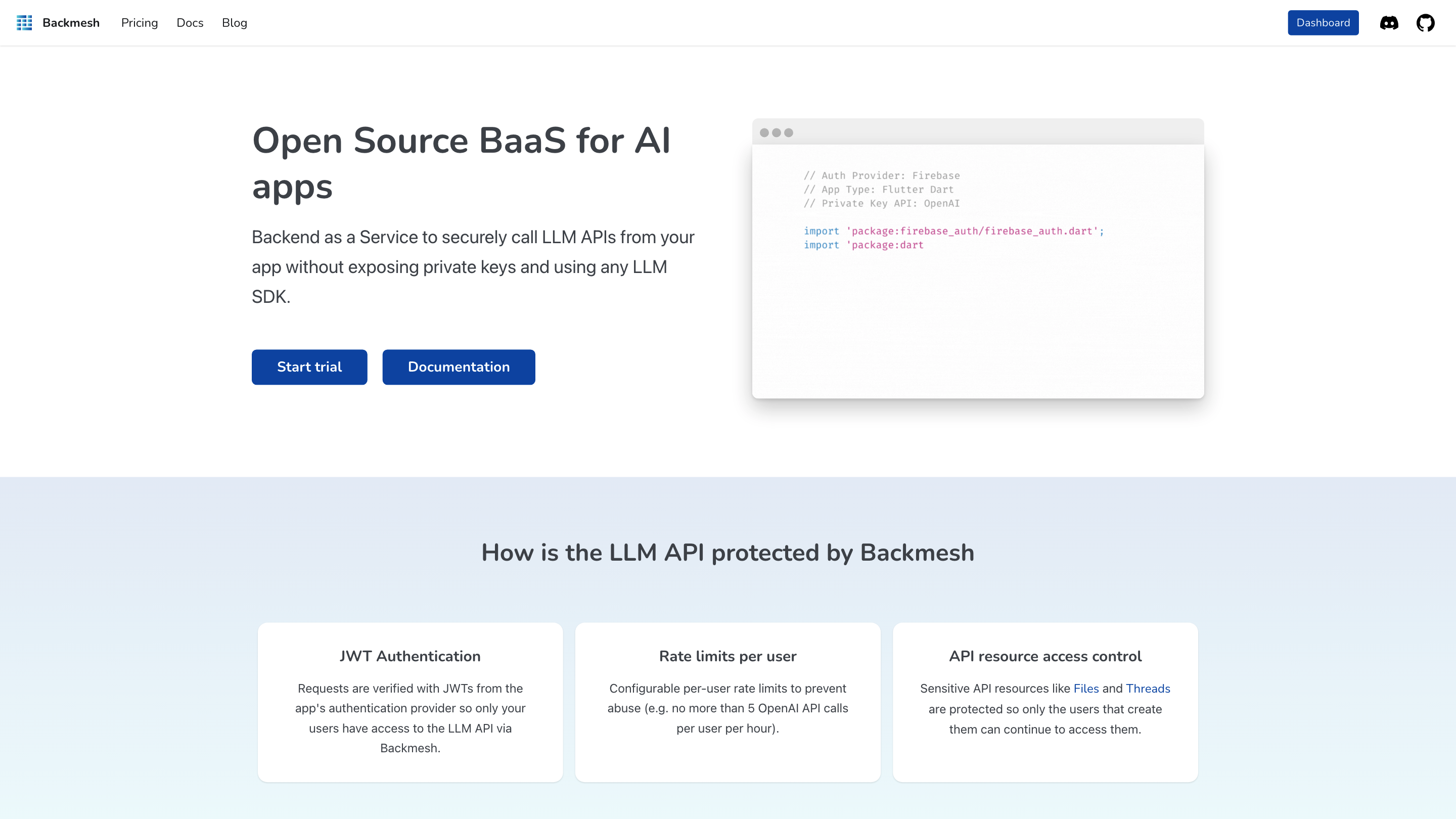Backmesh
Open siteIntroduction
A secure proxy for calling LLM APIs from apps without backend.
Backmesh Product Information
Backmesh is a Backend as a Service (BaaS) for AI apps that securely exposes LLM APIs to your front-end without exposing private keys or requiring LLM SDKs. It acts as an LLM API Gatekeeper, offering authentication, per-user rate limiting, and resource access controls to keep your application safe while enabling powerful AI capabilities.
Overview
Backmesh provides a secure conduit for calling LLM APIs from your app. It validates requests using JWTs issued by your app’s authentication provider, enforces per-user rate limits, and protects sensitive resources like Files and Threads so only the creator can access them. All LLM API calls can be instrumented for analytics to help you optimize usage, cost, and user satisfaction.
How It Works
- Your app authenticates users and issues JWTs.
- Requests to Backmesh include a JWT, proving the user’s identity.
- Backmesh validates the JWT, applies per-user rate limits, and routes the request to the LLM API.
- Responses are returned to your app, with optional analytics and usage insights.
Safety and Security Considerations
- JWT-based access ensures only authorized users can call LLM APIs.
- Per-user rate limits help prevent abuse and control costs.
- Sensitive resources (e.g., Files, Threads) are access-controlled so only creators can access them.
Core Features
- JWT Authentication: Requests verified with JWTs from your app’s auth provider to ensure authorized access.
- Per-User Rate Limits: Configurable limits to prevent abuse (e.g., sample limit like 5 OpenAI calls per user per hour).
- API Resource Access Control: Protects sensitive resources so only creators access them.
- LLM API Gatekeeper: Safe, managed gateway for calling LLM APIs from your app.
- LLM User Analytics: Instrumented API calls to understand usage, reduce costs, and improve user satisfaction.
- Ready-to-Start Documentation and Trial: Quick setup with documentation and trial access.
Getting Started
- Start a trial to evaluate integration.
- Use the Documentation and Product Dashboard to configure JWT providers, rate limits, and resource policies.
